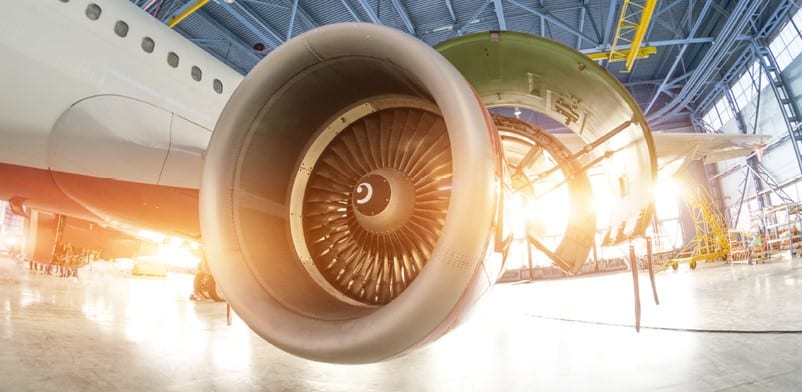
Companies are sitting on data sets scattered across various departments and knowledge sources within their business. Consolidating company-wide information into a single application benefits research teams across all functional areas, manufacturing included. It enhances productivity and can cut immense amounts of time by eliminating continuous trial and error. This can lead to a significant competitive advantage as it results in a more rapid time-to-market.
Thanks to artificial intelligence (AI), a 360° holistic view of all company knowledge is doable. By connecting all data sets, research and development (R&D) teams can have information on any part, process, piece, or component in a matter of seconds. This is a time-saver and ensures quality assurance and consistency, acting as an assistant to the researcher and feeding the exact intelligence they need.
The aviation industry benefits significantly from using an AI-driven solution to assist R&D teams and have applied these use cases to aircraft maintenance efforts. Before diving deeper into the specific use for aerospace manufacturing and maintenance, it’s crucial to understand the AI and machine learning (ML) components that make holistic views possible.
Achieving holistic views
A holistic view gives professionals a complete image of a topic. The only way to get this is by using the data a company has accumulated – not just some of it, but all of it. On top of company data, information extracted from research databases, reference works, specialist applications, and other outside data sources are a part of the equation.
With all the data linked together, it’s important that searchable entities appear in an understandable format so employees can act on the information and be the source of the most innovative developments. Comprehensive semantics ensure the query content is understandable and relevant to the business area by constantly expanding the knowledge base with newly available information.
The benefits are faster product launches, increased employee productivity, lower product development costs, optimized knowledge flow across the company, streamlined use and management of existing resources, efficient analysis of market and competitor trends, and increased corporate value. AI-driven knowledge capture enhances the performance of manufacturing R&D. Whether you’re designing engines or a maintenance technician inspecting a circuit board on a jetliner, these benefits optimize the time and efficiency of the employee and company, ultimately benefiting the bottom line.

AI for aircraft maintenance
With many overlapping themes in using data for aircraft development and performing fixes on aircraft parts, the aviation industry has begun to roll out these solutions across both departments.
When a plane is on the ground and undergoing maintenance checks and procedures, the airline is losing money. However, these checks and processes are necessary for safety. Aviation has turned to AI as digital assistants to reduce costs and prevent errors and reworks. Information about different airplane components could be scattered across more than 100 applications and systems. Connecting it all leads to full subject availability with just a single search – a holistic view.
A single search, such as “circuit board” will pull data from every structured and unstructured data source within a company where information on a circuit board exists. Nowadays, you find the length and specificity of searches increasing. These in-depth searches are necessary for a highly specialized environment, so a search might look like, “How to fix a particular component on a particular type of circuit board.”
AI crawls through inventory lists, maintenance plans, and logistics forms, producing interactive diagrams and answers to help with the question. Natural language processing (NLP) allows machines to read human language and understand precisely what you are asking, allowing that same machine to give the answer to exactly what was requested.
Digital twins, predictive maintenance
A digital twin is a numerical representation of a real-world entity or system. Its implementation is an encapsulated software object or model that mirrors a unique physical object, process, organization, person, or other abstraction. Data from multiple digital twins can be aggregated for a composite view across several entities and their related processes.
AI-based solutions can also provide maintenance teams with a 3D-digital view of their working parts for ultimate visualization and understanding of the component undergoing checks and allow teams to detect problems before they occur and jeopardize operations – predictive maintenance.
Using all available data and knowledge is crucial for time and cost reduction, safety, and accuracy. Equipping R&D and maintenance teams with the best technology and tools is a prerequisite to success for avoiding reworks and optimizing productivity and collaboration across departments. Is AI the answer to effective knowledge management? I know so.
Mindbreeze Corp.

Explore the January February 2022 Issue
Check out more from this issue and find your next story to read.
Latest from Aerospace Manufacturing and Design
- Piasecki acquires Kaman's KARGO UAV program
- PI Americas’ long-travel XY piezo nanopositioners-scanners
- AAMI project call submission deadline extended to May 12
- Jergens launches cast iron tooling column additions
- Airbus to acquire assets relating to its aircraft production from Spirit AeroSystems
- FANUC America's Cobot and Go web tool
- Chicago Innovation Days 2025: Shaping the future of manufacturing
- High-density DC/DC converters for mission-critical applications





